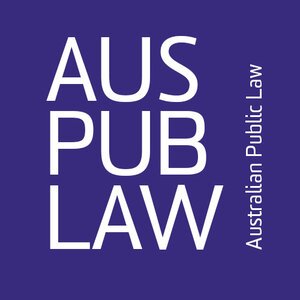
Index
- July 2025 2
- June 2025 1
- May 2025 2
- March 2025 2
- February 2025 2
- January 2025 1
- November 2024 5
- October 2024 2
- August 2024 3
- July 2024 2
- June 2024 4
- May 2024 1
- April 2024 5
- March 2024 5
- February 2024 4
- January 2024 2
- December 2023 5
- November 2023 7
- October 2023 4
- September 2023 5
- August 2023 3
- July 2023 5
- June 2023 3
- May 2023 5
- April 2023 3
- March 2023 5
- February 2023 9
- December 2022 9
- November 2022 3
- October 2022 7
- September 2022 4
- August 2022 8
- July 2022 3
- June 2022 4
- May 2022 9
- April 2022 7
- March 2022 2
- February 2022 5
- December 2021 7
- November 2021 12
- October 2021 9
- September 2021 14
- August 2021 9
- July 2021 5
- June 2021 9
- May 2021 4
- April 2021 3
- March 2021 13
- February 2021 7
- December 2020 1
- November 2020 4
- October 2020 4
- September 2020 5
- August 2020 5
- July 2020 8
- June 2020 5
- May 2020 11
- April 2020 6
- March 2020 5
- February 2020 3
- January 2020 1
- December 2019 1
- November 2019 3
- October 2019 2
- September 2019 2
- August 2019 4
- July 2019 2
- June 2019 2
- May 2019 5
- April 2019 8
- March 2019 2
- February 2019 3
- December 2018 1
- November 2018 9
- October 2018 2
- September 2018 5
- August 2018 3
- July 2018 3
- June 2018 2
- May 2018 5
- April 2018 7
- March 2018 3
- February 2018 4
- December 2017 3
- November 2017 7
- October 2017 4
- September 2017 3
- August 2017 3
- July 2017 1
- June 2017 3
- May 2017 2
- April 2017 3
- March 2017 4
- February 2017 3
- January 2017 1
- December 2016 3
- November 2016 4
- October 2016 2
- September 2016 1
- August 2016 3
- July 2016 1
- June 2016 3
- May 2016 3
- April 2016 4
- March 2016 4
- February 2016 3
- January 2016 1
- December 2015 2
- November 2015 4
- October 2015 4
- September 2015 4
- August 2015 3
- July 2015 6
- June 2015 6
Back at the Border: When Protection Ends at Departure — Lessons from Plaintiff S15/2025
Jason Donnelly and Chris Honnery
Plaintiff S15/2025 concerned an application in the High Court’s original jurisdiction brought on behalf of a Syrian refugee who was refused a resident return visa under s 501(1) of the Migration Act 1958 (Cth).
Shortly before the final hearing, the Minister for Immigration and Citizenship conceded that the decision to refuse the Plaintiff’s visa was affected by jurisdictional error. Consequently, the matter was resolved by consent, such that the High Court will not deliver a judgment that would have considered the Executive’s responsibilities in respect of refugees permanently residing in Australia who seek to re-enter the country following a temporary departure. This post unpacks the central issues in the case, including the scope of Australia’s non-refoulement obligations and potential 'constructive refoulement', considers the implications of the Minister’s concession, and analyses the impugned decision to identify lessons for practitioners.
What If?: LPDT v MICMSMA [2024] HCA 12
Douglas McDonald-Norman
In order to determine whether a decision is affected by jurisdictional error, a court must ask two questions. Has an error occurred, in breach of the statutory conferral of power to make that decision? And, if so, was that error material to the decision-maker’s ultimate exercise of power? For an error to be material, an applicant for review must establish that there is a realistic possibility that, if not for the error, the decision-maker’s ultimate exercise of power could have been different.
SDCV v Director-General of Security: ‘Closed evidence' and ‘practical justice'
David Hume
In SDCV v Director-General of Security [2022] HCA 22, the High Court held, 4:3, that it was constitutionally-permissible for the Federal Court to have regard to 'closed' information, which was known to the Court and the Government’s lawyers, and was the subject of 'closed' submissions involving the judges and the Government’s lawyers but was not disclosed to SDCV or his lawyers. The key issue in the case was whether the statutory scheme established by the Administrative Appeals Tribunal Act 1975 (Cth) – which permitted the Federal Court to rely on closed information, while prohibiting it from being disclosed to SDCV – required or permitted the Federal Court to act in a procedurally unfair way.
In this post, I first address the factual and procedural background (which are interesting in and of themselves); secondly, I address some key aspects of the majority’s reasoning; and, thirdly, I make some observations on the reasoning and outcome.
Book forum: Alan Robertson SC
Alan Robertson SC
Dr Amanda Sapienza’s Judicial Review of Non-Statutory Executive Action is an important work because it has as its centre of attention non-statutory executive action, rather than dealing with it, however well, in a more general context of public law. In this second category I would include, for …
AJL20 v Commonwealth: Non-refoulement, indefinite detention and the ‘totally screwed’
Sangeetha Pillai
It’s coming up to the 30th birthday of Australia’s policy of mandatory immigration detention for non-citizens who do not hold a visa. Throughout its lifetime, the policy has remained a controversial cornerstone of Australia’s migration law framework, facing – and withstanding – multiple High Court challenges.


![What If?: LPDT v MICMSMA [2024] HCA 12](https://images.squarespace-cdn.com/content/v1/6153fe0470ebd0659ee01575/1713689963060-WCQKKGARV1WMMBMVLPEP/DJMN%2B-%2BAuthor%2BPhoto.jpg)


